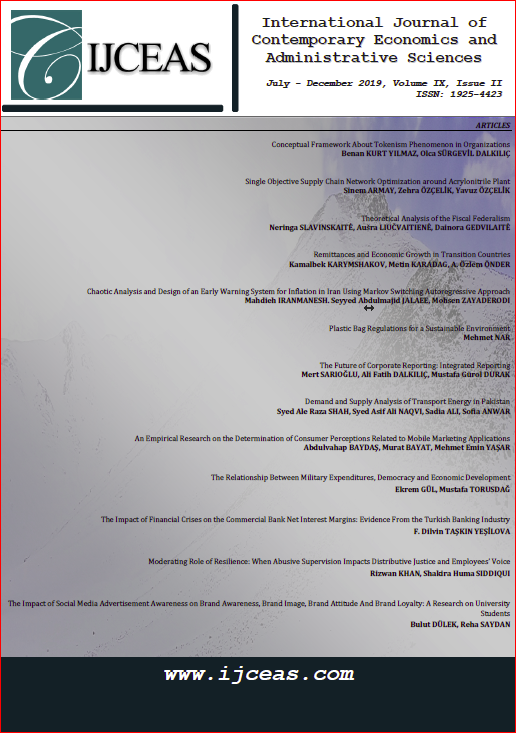Demand and Supply Analysis of Transport Energy in Pakistan
DOI:
https://doi.org/10.5281/zenodo.3596094Abstract
Over the last decade, the importance of energy consumption in transport sector has burgeoned forth and has been growing rapidly in Pakistan, and the course is being augured to linger over the coming decades. This paper brings about the function of transport energy demand, economic growth (GDP), oil rents, gas rents, road length and number of registered vehicles for Pakistan over the 1980-2015 by using Autoregressive Distributive Lag (ARDL) approach. The results which have had come about shows preponderance of the fact that there is powerful relationship between all concerned variables when transport energy demand is used as a dependent variable in Pakistan. Hence, Autoregressive Integrated Moving Average (ARIMA) model is used for the future forecasting related to the consumption and production of gasoline and oil. According to the forecasted results, consumption (demand) is much greater as compared to production (supply) in both non-renewable sources. As policy makers suggest, we can make up for this lacuna by bourgeoning forth new technology (hybrid vehicles) as well as an awareness campaign through which we can make others abreast of this research may be launched about energy conservation methods to curtail the transport energy demand (TED) in the country.
##submission.downloads##
Pubblicato
Come citare
Fascicolo
Sezione
Licenza
The Author(s) must make formal transfer of copyright for each article prior to publication in the International Journal of Contemporary Economics and Administrative Sciences. Such transfer enables the Journal to defend itself against plagiarism and other forms of copyright infringement. Your cooperation is appreciated. You agree that copyright of your article to be published in the International Journal of Contemporary Economics and Administrative Sciences is hereby transferred, throughout the World and for the full term and all extensions and renewals thereof, to International Journal of Contemporary Economics and Administrative Sciences.
The Author(s) reserve(s): (a) the trademark rights and patent rights, if any, and (b) the right to use all or part of the information contained in this article in future, non-commercial works of the Author's own, or, if the article is a "work-for-hire" and made within the scope of the Author's employment, the employer may use all or part of the information contained in this article for intra-company use, provided the usual acknowledgements are given regarding copyright notice and reference to the original publication.
The Author(s) warrant(s) that the article is Author's original work, and has not been published before. If excerpts from copyrighted works are included, the Author will obtain written permission from the copyright owners and shall credit the sources in the article. The author also warrants that the article contains no libelous or unlawful statements, and does not infringe on the rights of others. If the article was prepared jointly with other Author(s), the Author agrees to inform the co-Author(s) of the terms of the copyright transfer and to sign on their behalf; or in the case of a "work-for-hire" the employer or an authorized representative of the employer.
The journal is registered with the ISSN : 1925-4423.
IJCEAS is licensed under a Creative Commons Attribution 4.0 International License.
This license lets others distribute, remix, tweak, and build upon your work, even commercially, as long as they credit you for the original creation. This is the most accommodating of licenses offered. Recommended for maximum dissemination and use of licensed materials.


